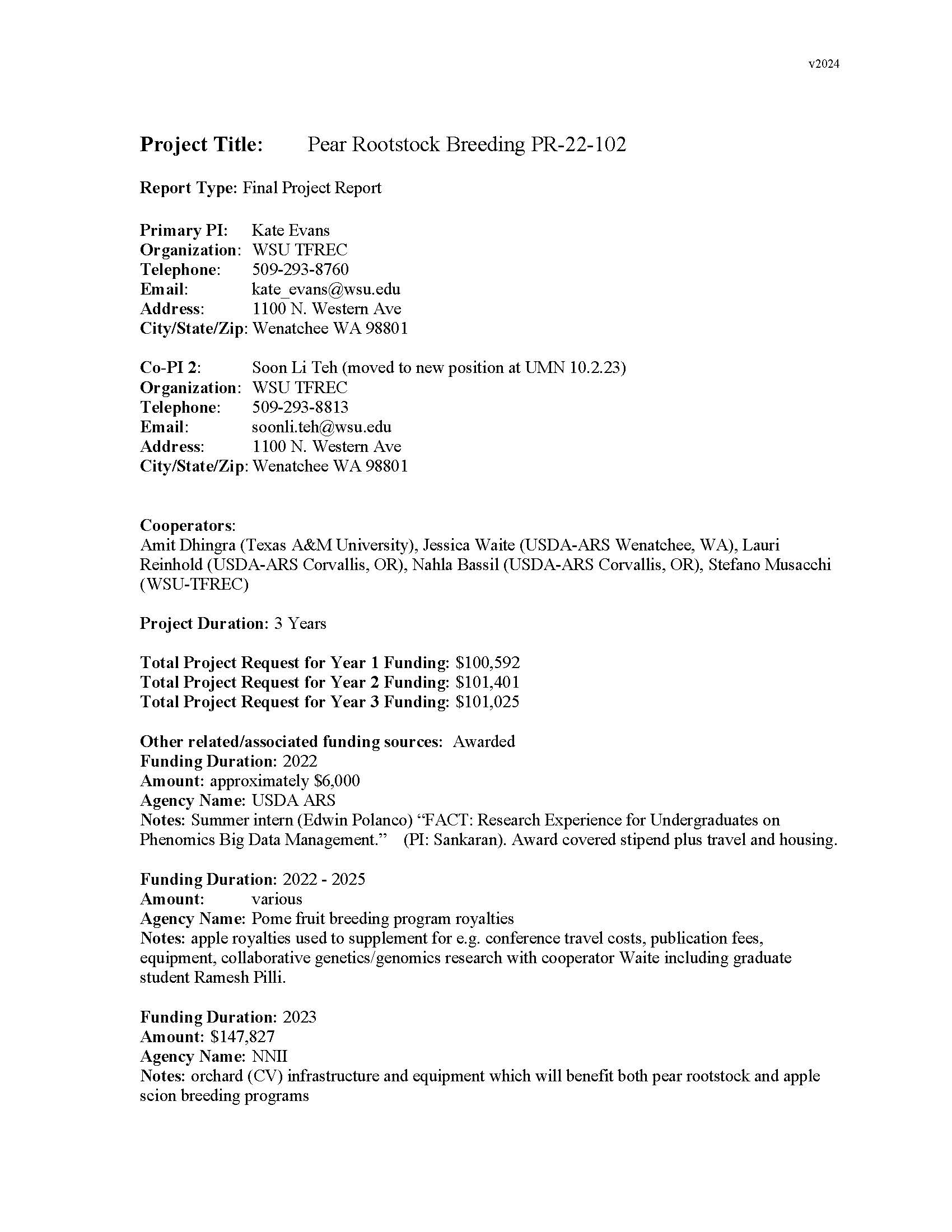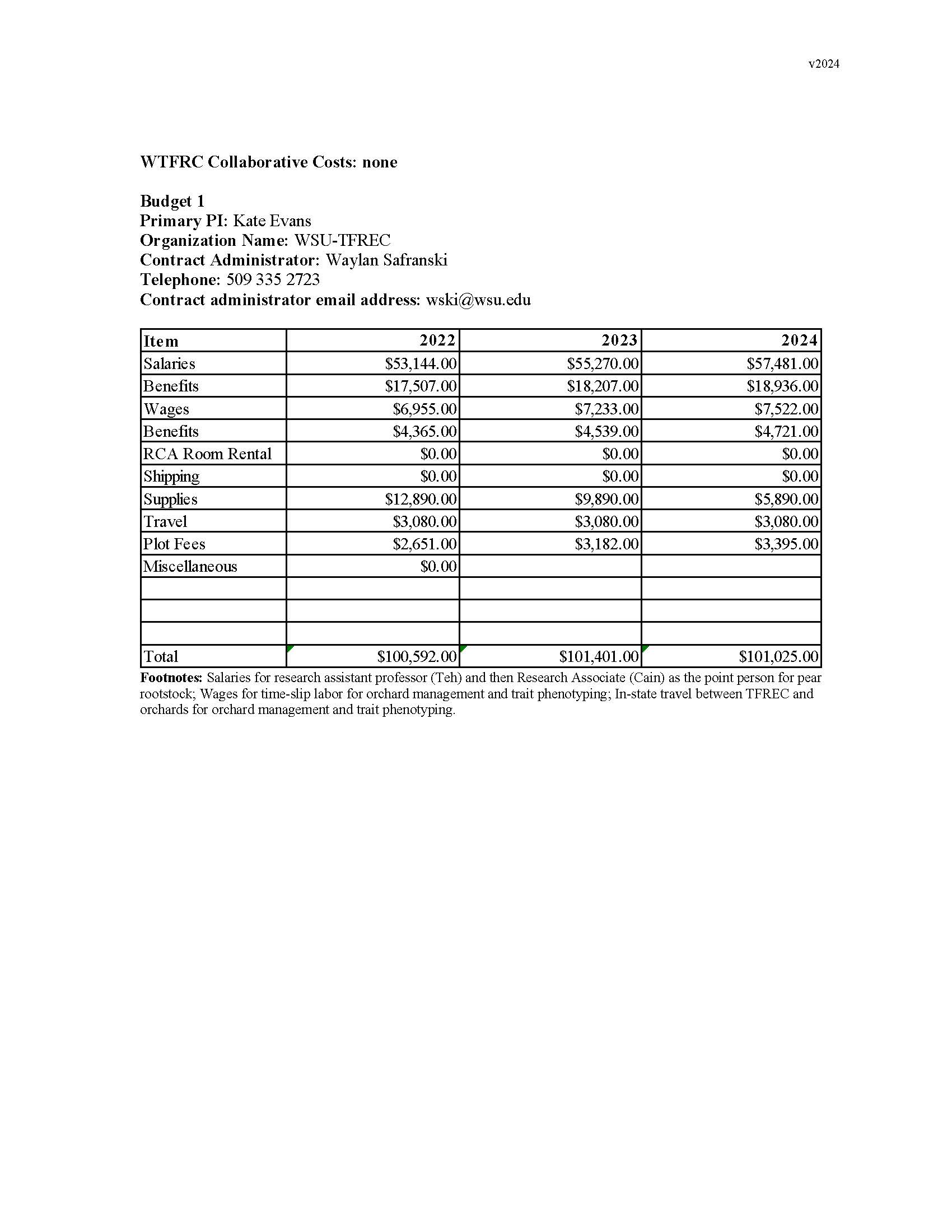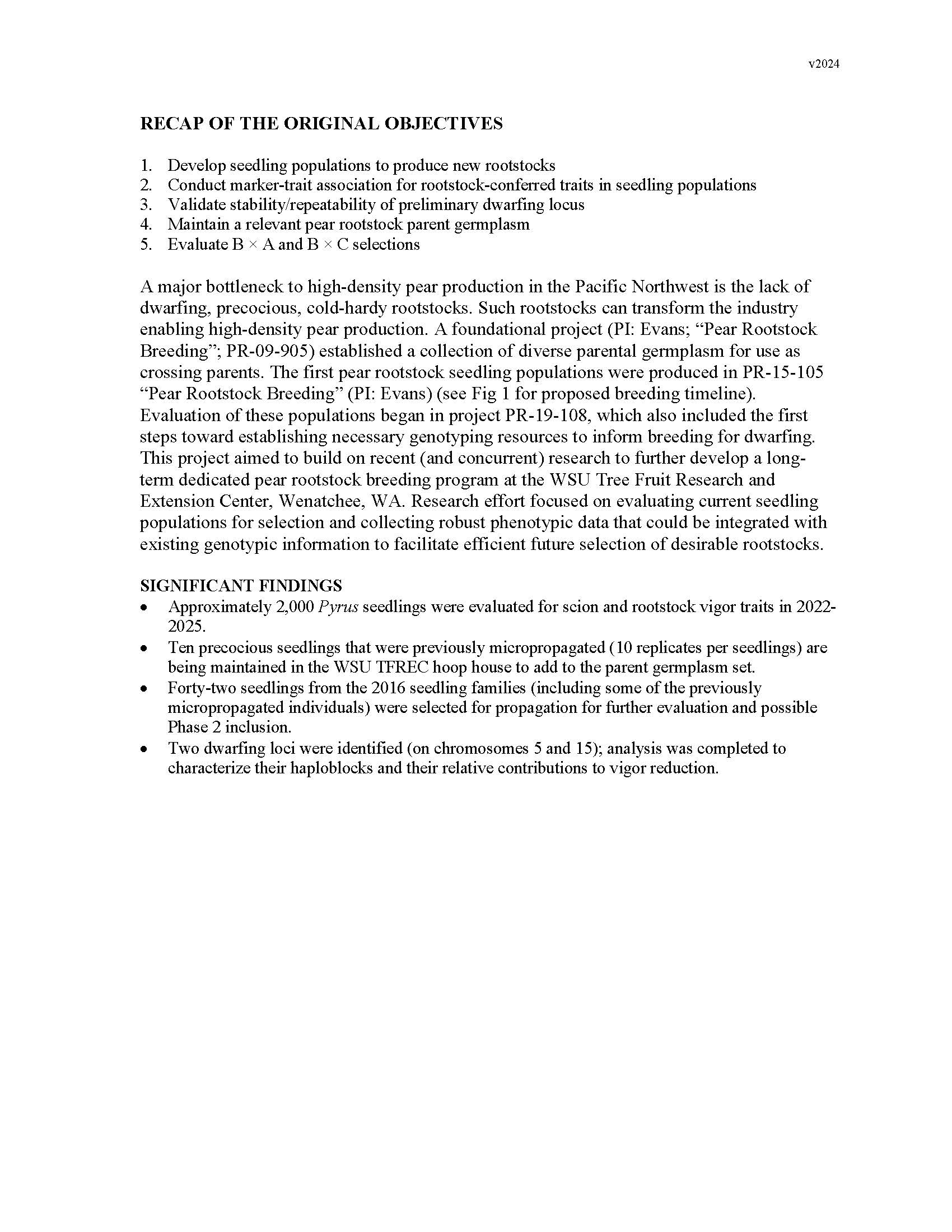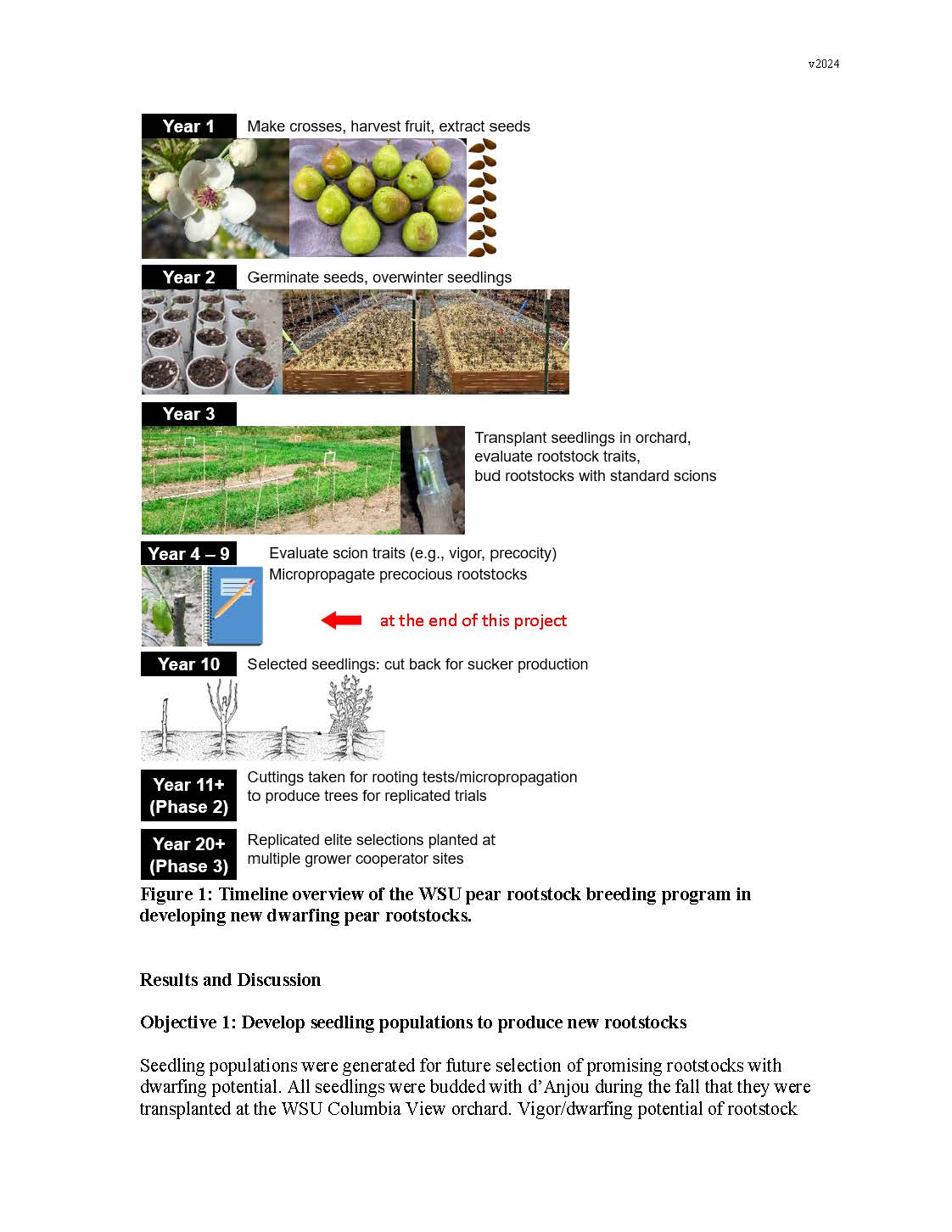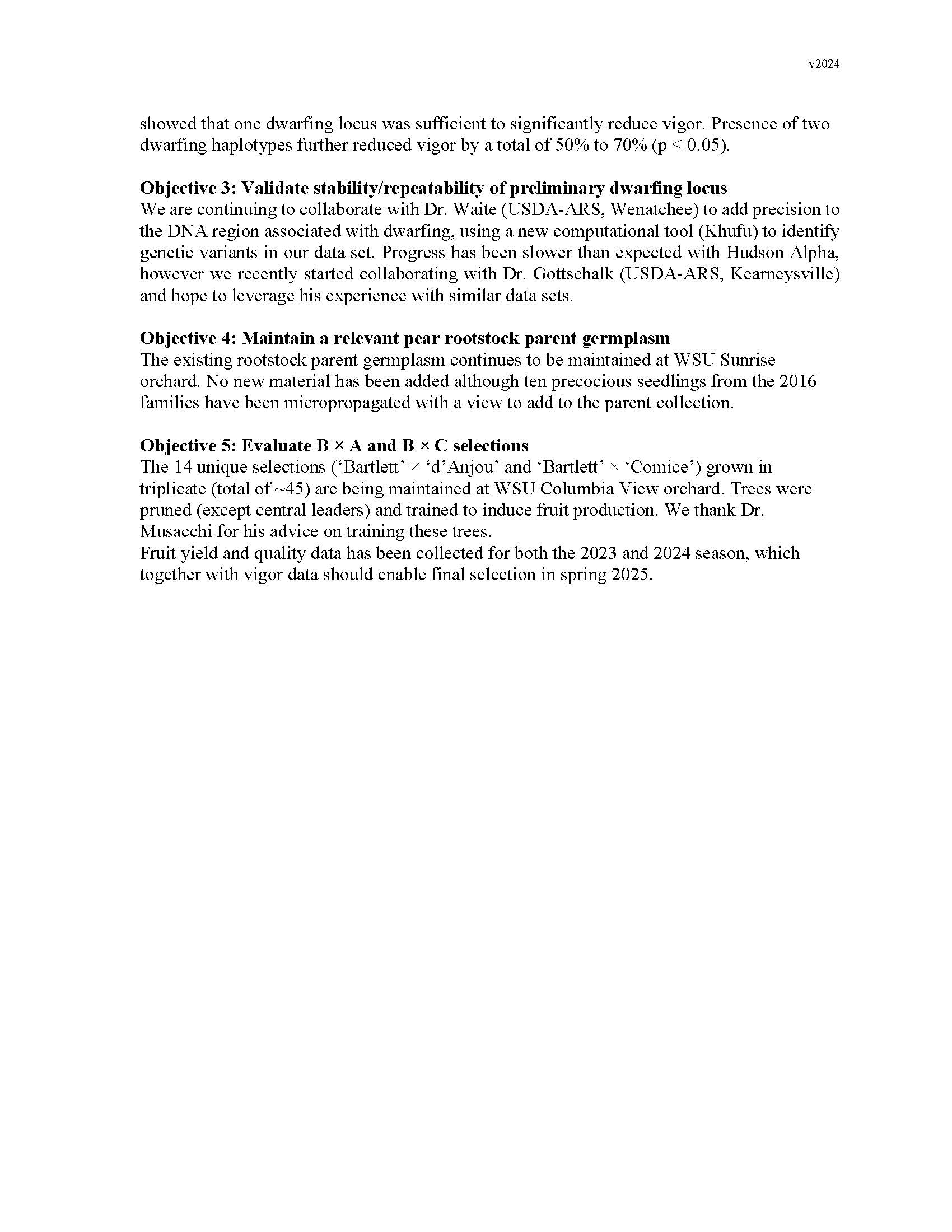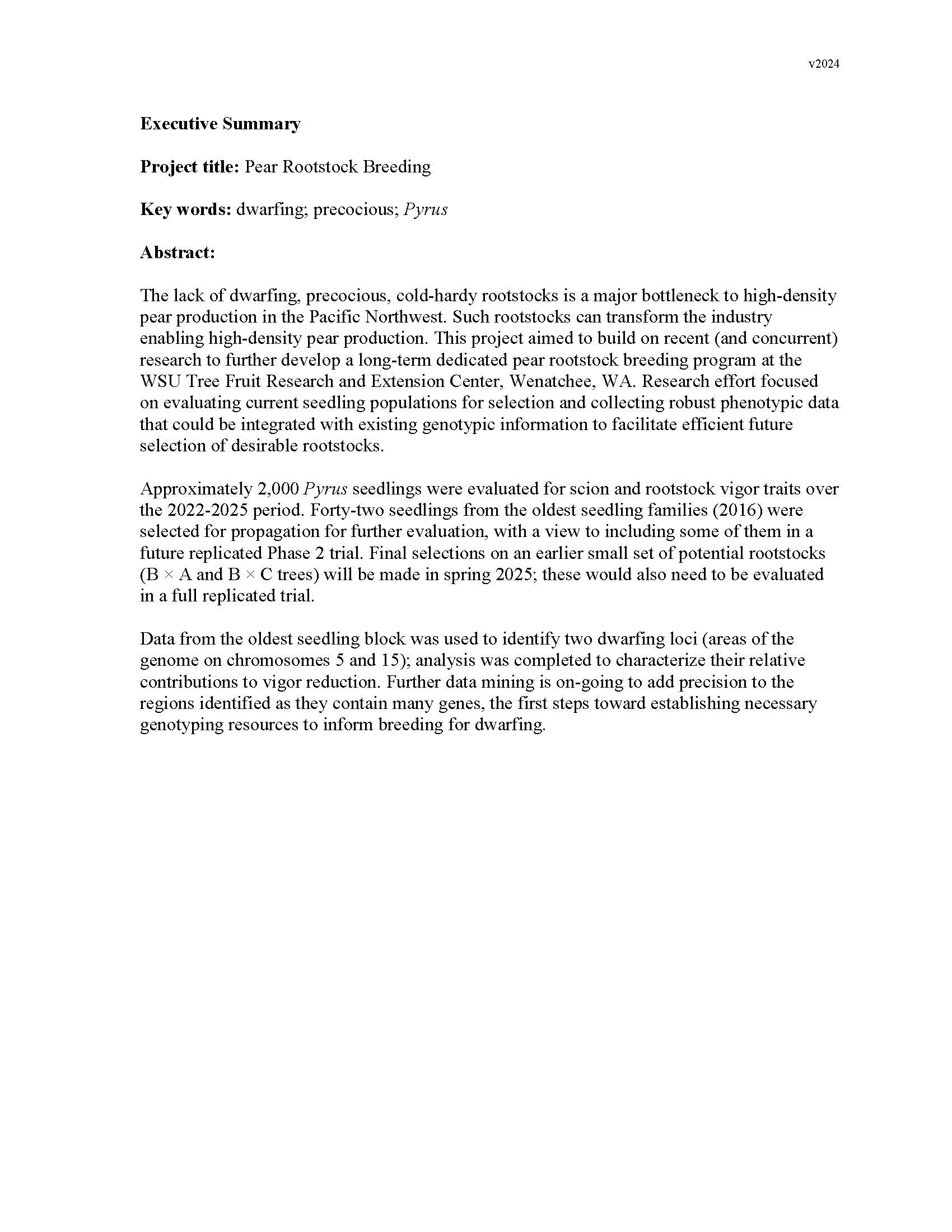Pear Rootstock Breeding PR-22-102
Author: Kate Evans
Published: 2025
Summary: The lack of dwarfing, precocious, cold-hardy rootstocks is a major bottleneck to high-density pear production in the Pacific Northwest. Such rootstocks can transform the industry enabling high-density pear production. This project aimed to build on recent (and concurrent) research to further develop a long-term dedicated pear rootstock breeding program at the WSU Tree Fruit Research and Extension Center, Wenatchee, WA. Research effort focused on evaluating current seedling populations for selection and collecting robust phenotypic data that could be integrated with existing genotypic information to facilitate efficient future selection of desirable rootstocks. Approximately 2,000 Pyrus seedlings were evaluated for scion and rootstock vigor traits over the 2022-2025 period. Forty-two seedlings from the oldest seedling families (2016) were selected for propagation for further evaluation, with a view to including some of them in a future replicated Phase 2 trial. Final selections on an earlier small set of potential rootstocks (B × A and B × C trees) will be made in spring 2025; these would also need to be evaluated in a full replicated trial. Data from the oldest seedling block was used to identify two dwarfing loci (areas of the genome on chromosomes 5 and 15); analysis was completed to characterize their relative contributions to vigor reduction. Further data mining is on-going to add precision to the regions identified as they contain many genes, the first steps toward establishing necessary genotyping resources to inform breeding for dwarfing.
Keywords:

